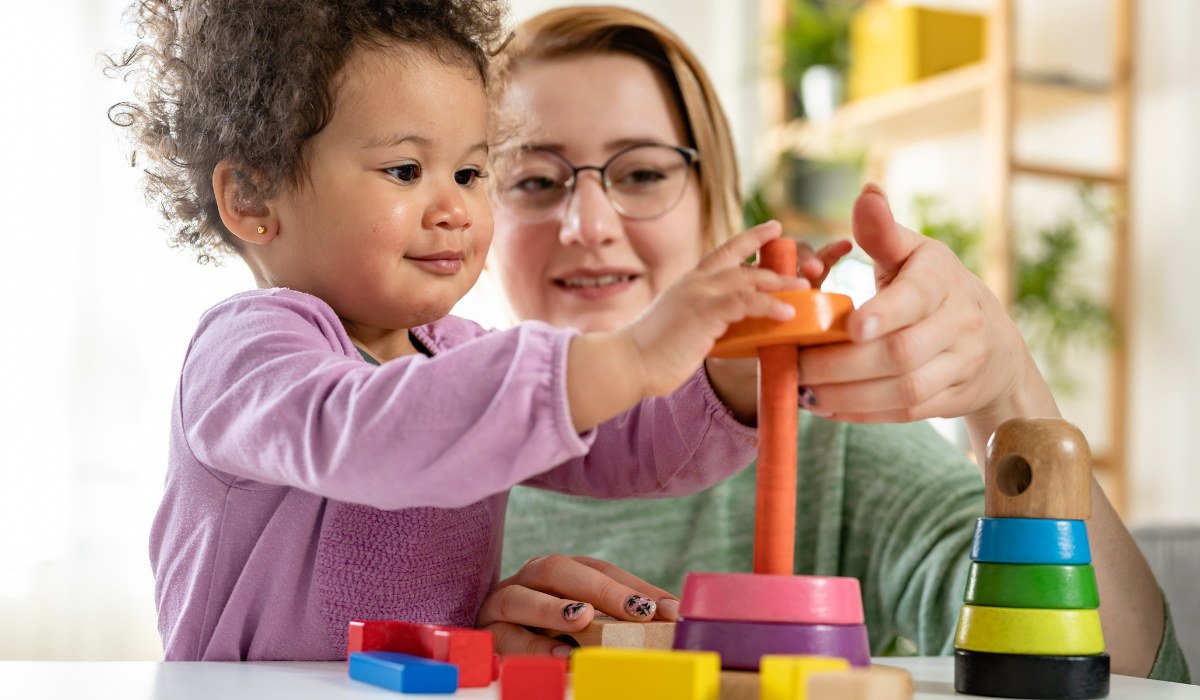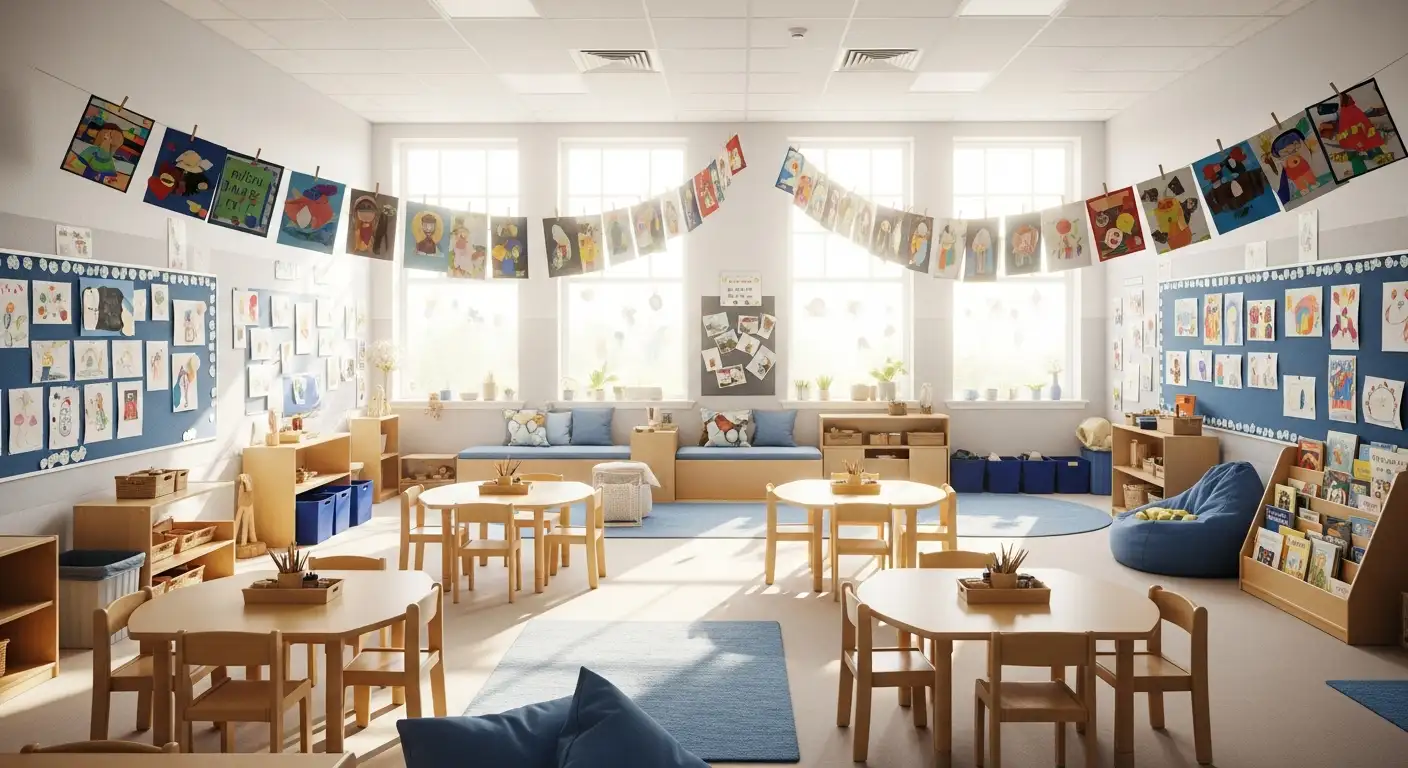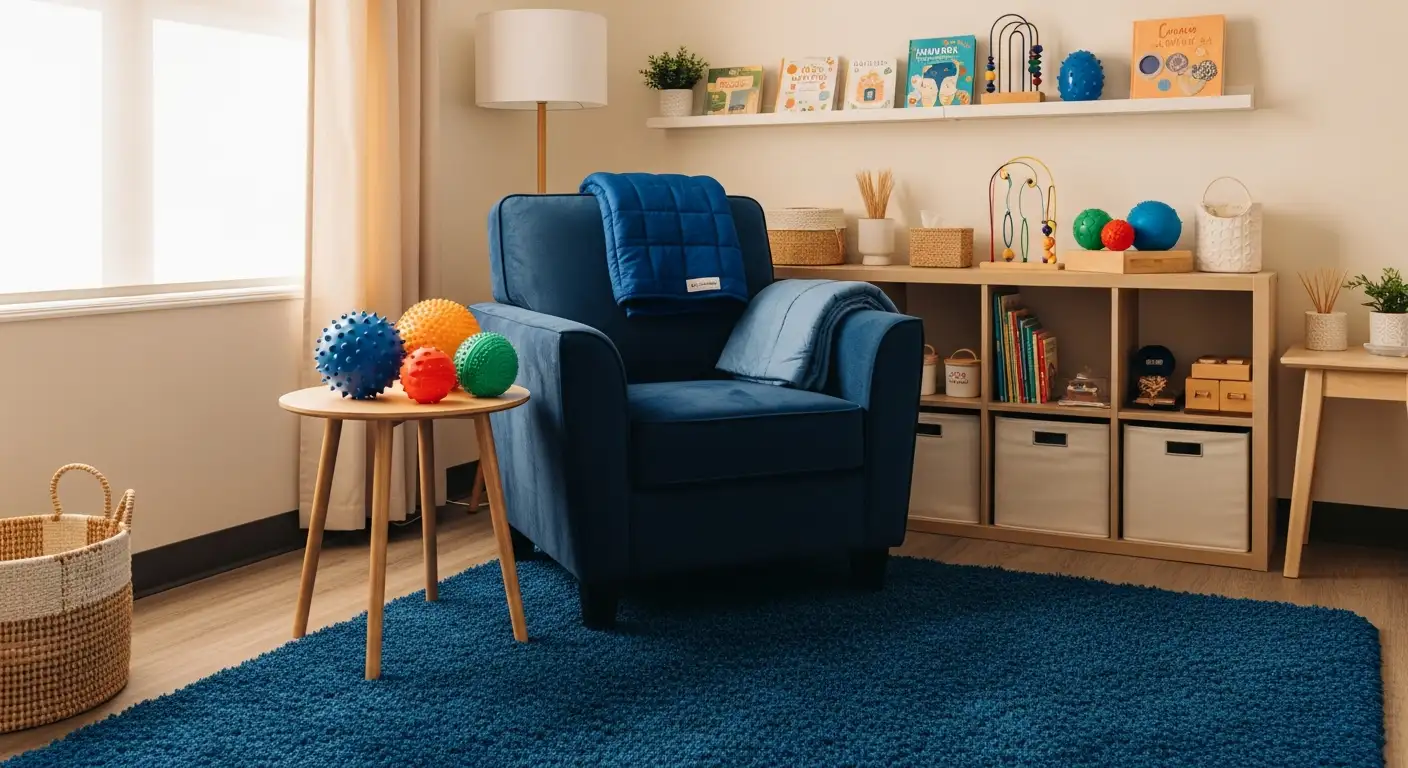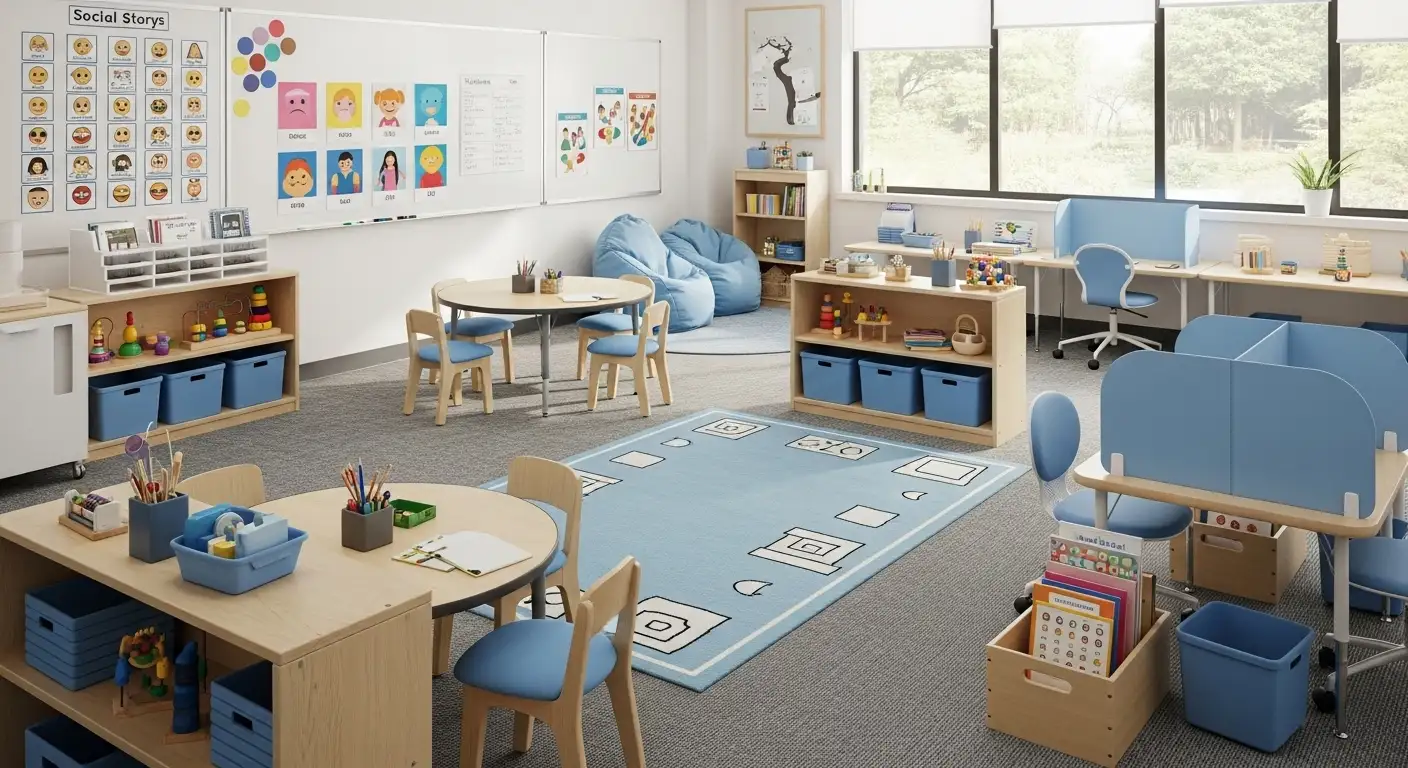Social Stories For Autism
Enhancing Social Understanding in Autism: The Power of Social Stories

Understanding the Role of Social Stories in Autism Support
Social stories are a widely recognized intervention designed to support individuals with autism by helping them navigate and understand complex social situations. Developed in the early 1990s by Dr. Carol Gray, these narratives serve as personalized tools that promote social skills, reduce anxiety, and facilitate better communication. This article explores the components, effectiveness, and resources associated with social stories for autism, illustrating how they can be tailored to support social development across various environments.
Fundamentals of Social Stories for Autism
What are social stories for autism and how do they support understanding social situations?
Social stories are short, personalized narratives designed to help children with autism better understand social norms and expectations. They illustrate specific social situations and model appropriate behaviors in a clear, positive way. These stories typically include descriptions of the setting, actions, and feelings involved, making abstract social rules more concrete and understandable.
Developed by Dr. Carol Gray in the early 1990s, social stories aim to teach social skills such as interpreting body language, managing emotions, and coping with changes or transitions. They are often created using simple language, and may include pictures or visual supports to enhance understanding. The stories are tailored to each child's individual needs and can address behaviors like respecting personal space, turn-taking, or handling anxiety.
Parents, caregivers, and professionals like speech therapists or psychologists collaborate to craft stories that reflect real-life situations relevant to the child's daily experiences. By presenting social information in an engaging and accessible format, social stories reduce anxiety and improve social participation. They are considered effective intervention tools that promote social learning, emotional regulation, and smoother interactions for children on the autism spectrum.
The purpose and core objectives of social stories
The main objectives of social stories are to clarify social expectations, foster empathy, and promote appropriate responses. They serve not only to teach specific behaviors but also to build confidence and independence. When used consistently, social stories help children anticipate social events, understand their own feelings, and respond more adaptively.
In summary, social stories are a well-established, evidence-supported method to support social understanding and skill development in autistic children. Their personalized, positive approach makes social interactions less stressful and more predictable, paving the way for greater social participation and emotional growth.
Design Principles and Components of Effective Social Stories
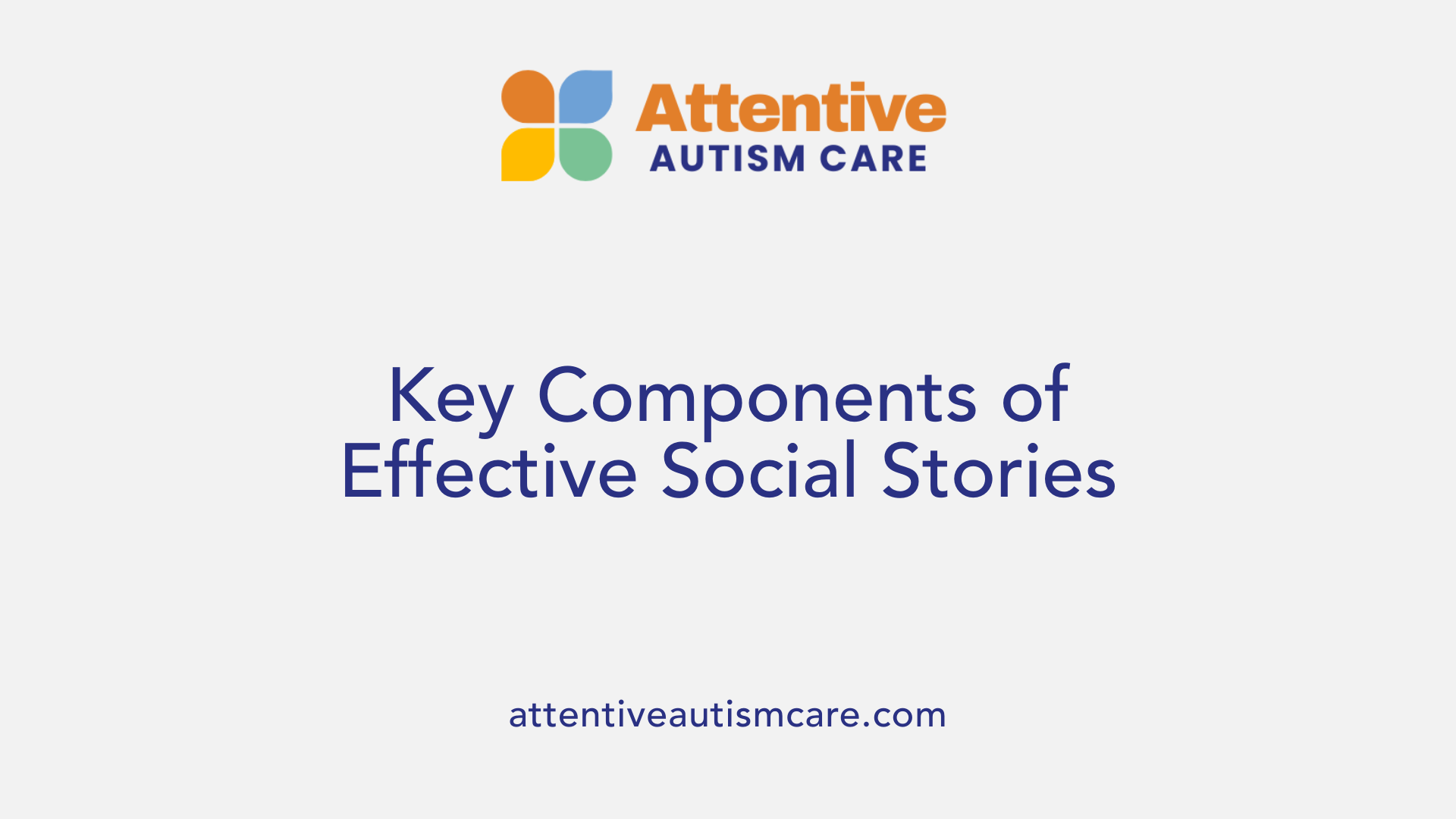
What are the components and design principles of effective social stories for autism?
Effective social stories are carefully crafted narratives that help children with autism understand social situations, behaviors, and expectations. They adhere to specific guidelines that ensure the stories are both engaging and educational.
One of the foundational elements is the language style. These stories should be written in a positive, literal, and clear manner. The language must be simple enough for children to grasp easily, avoiding figurative expressions or complex vocabulary. Using positive language encourages children to focus on appropriate behaviors and attitudes.
In addition, visual supports such as pictures, icons, or multimedia elements like videos can significantly enhance understanding. Visual aids help children connect words with concepts and provide contextual clues that support learning, especially for those with limited or developing language skills.
The structure of a social story typically includes various sentence types, each serving a different purpose:
- Descriptive sentences: Explain the setting, behaviors, or social norms.
- Directive sentences: Guide the child on what to do.
- Affirmative sentences: Reinforce positive behaviors.
- Perspective sentences: Help the child understand others' feelings or views.
Tailoring each story to the individual child is crucial. This involves considering the child's specific needs, interests, cognitive level, and personal experiences. Including the child's favorite topics or interests makes the story more engaging and relevant.
The design process involves defining a clear goal, gathering appropriate information, and structuring the story into a beginning, middle, and end. The stories should have a specific, measurable behavioral objective and reflect the child's environment and routines.
Overall, effective social stories follow core principles: they are goal-oriented, age-appropriate, positively framed, detailed yet simple, and visually supported. When these components come together, social stories can be powerful tools for fostering social understanding, reducing anxiety, and promoting positive behaviors in children with autism.
Evaluating the Effectiveness and Benefits of Social Stories
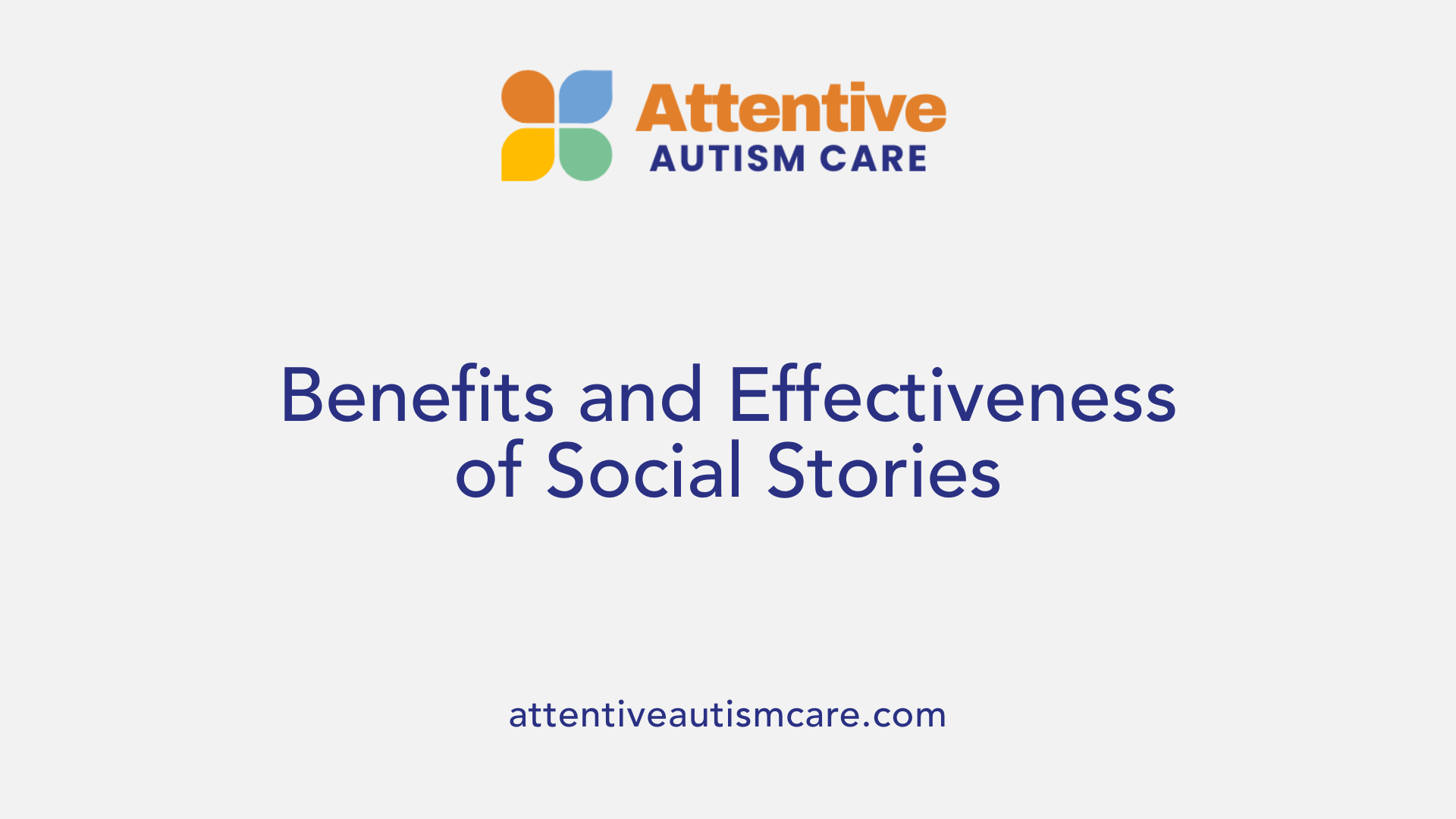
Are social stories effective for autism, and what benefits do they provide?
Social stories are a common intervention used to improve social understanding and manage behavioral challenges in children and individuals with autism spectrum disorder (ASD). They serve as tailored narratives that depict social situations, helping individuals recognize appropriate responses and behaviors.
Research findings on social stories’ effectiveness vary. Some studies show positive effects, such as increased social engagement, improved communication, and a decrease in disruptive or challenging behaviors. For example, a notable study involving over 850 participants through the SOFA app found that social stories helped younger, verbal autistic children, and even those who are gender-diverse, to better navigate social situations.
However, not all research is conclusive. Some evidence is weakened by methodological limitations, such as small sample sizes or the lack of control groups. Others report improvements when social stories are combined with other interventions, making it difficult to isolate their unique impact.
Despite this, many benefits are associated with social stories. They often increase social awareness, help children understand complex social cues, and promote behavior regulation. They also tend to reduce anxiety, especially when personalized to the child’s specific needs and presented using multimedia formats like videos, pictures, or audio.
The growing body of digital resources, including apps and online templates, has made it easier to customize and deliver social stories. These adaptations often lead to higher engagement and better understanding.
Experts agree that social stories are most effective when integrated with other evidence-based techniques, such as social skills training and behavioral interventions. While more rigorous scientific studies are needed to precisely measure their standalone effectiveness, the current evidence indicates that social stories can be a valuable part of a comprehensive approach to supporting individuals with autism.
Supporting Autism Communication Diversity through Social Stories
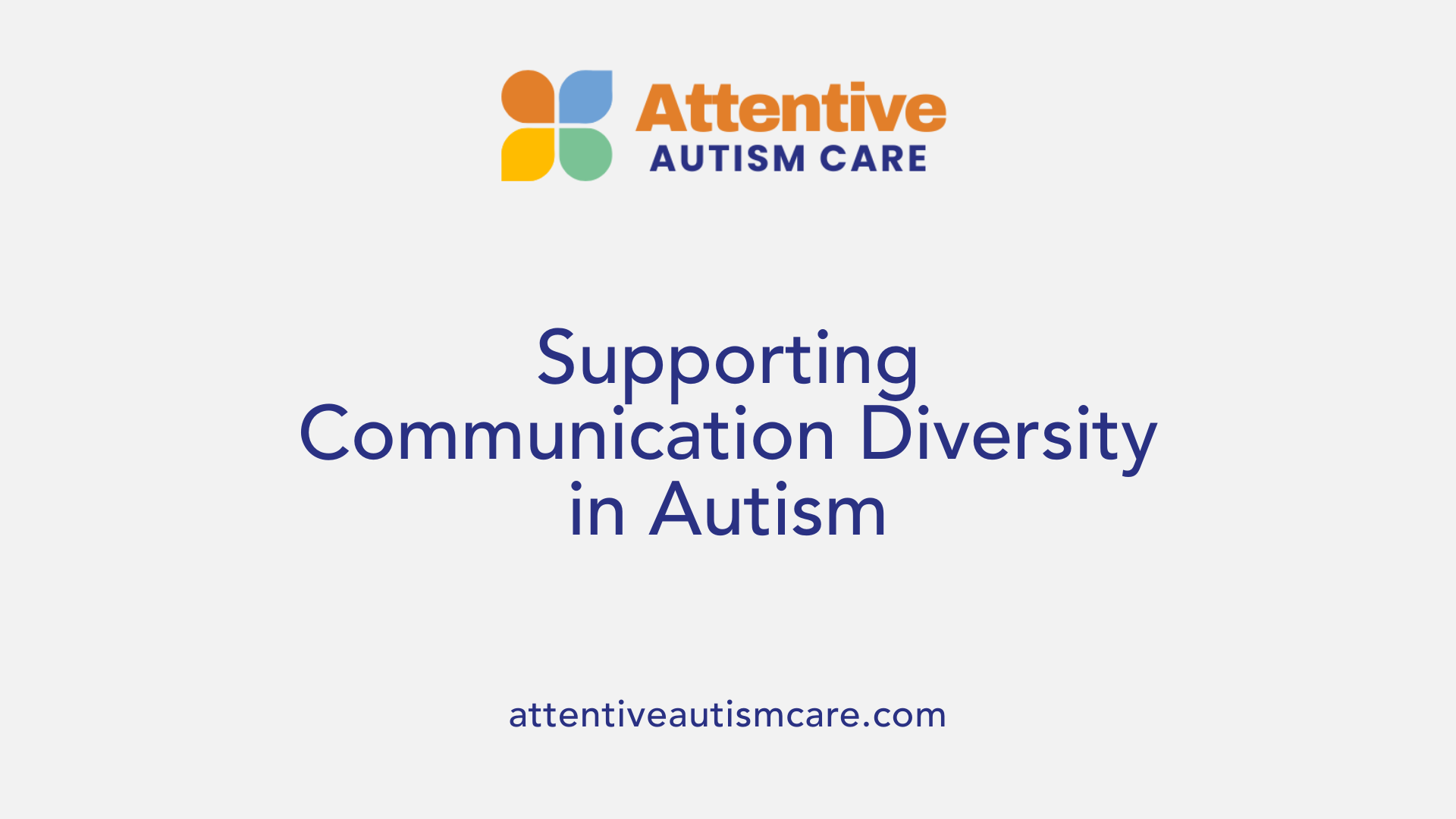
How do social stories assist individuals with autism in understanding communication differences and social norms?
Social stories are effective tools that help children with autism grasp complex social concepts and communication cues. They do this by providing clear, structured narratives that depict social situations in a simple and approachable way. These stories often include descriptions of typical behaviors, expected responses, and social norms, tailored specifically to the child's needs.
One way social stories support understanding is by addressing non-verbal cues like facial expressions, gestures, and body language. Since many autistic individuals find it difficult to interpret these signals, stories can model and explain them with visual supports or relatable scenarios, making abstract cues more concrete.
Creating stories that reflect the child's world and using engaging formats such as images, animations, or narration improves their accessibility. Through repeated reading and consistent use, these stories familiarize children with appropriate communication strategies and social expectations.
Moreover, social stories can reduce anxiety related to unfamiliar or challenging social settings, boosting the child's confidence in interactions. They serve as a practical bridge, closing the gap between what autistic children experience and the social norms they are expected to follow.
In summary, social stories support social communication by teaching children to recognize social cues, understand norms, and respond appropriately, fostering a greater sense of inclusion and independence in social environments.
Addressing Specific Topics Using Social Stories, Including Health and Safety
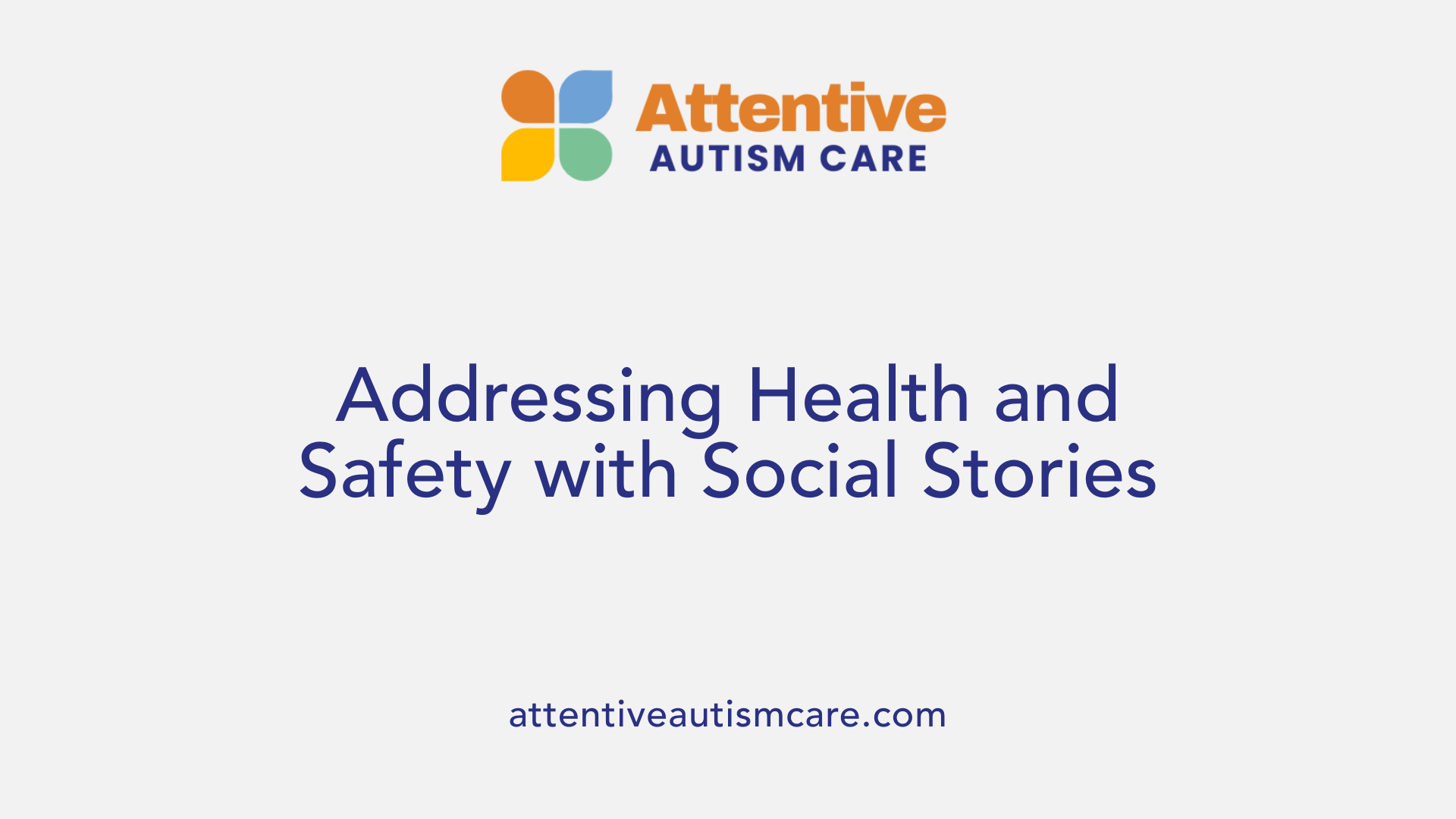 Social stories are versatile tools that can be tailored to address various specific topics, especially health and safety concerns. They are particularly effective in teaching children and adults with autism about behaviors related to health, hygiene, and safety measures.
Social stories are versatile tools that can be tailored to address various specific topics, especially health and safety concerns. They are particularly effective in teaching children and adults with autism about behaviors related to health, hygiene, and safety measures.
When creating social stories for health behaviors, storytellers focus on clarity and simplicity. These stories explain why certain actions, like hand-washing, wearing masks, or maintaining social distance, are important. By breaking down complex ideas into understandable steps and using positive language, social stories reduce anxiety and confusion about health practices.
During the COVID-19 pandemic, social stories played a vital role in educating individuals with autism about virus transmission and safety precautions. Stories on this topic might include illustrations showing proper hand hygiene, the importance of wearing masks, or how to navigate public spaces safely. Visual aids like pictures or videos are often incorporated into these stories to reinforce understanding.
Resources available online provide guidelines and templates for developing these stories, ensuring they are tailored to age and cognitive level. For example, a social story might start with a title such as "Staying Safe During COVID-19," followed by simple sentences outlining behaviors like washing hands for 20 seconds, avoiding large gatherings, or wearing a mask when outside.
Development of visual supports and step-by-step instructions enhances the effectiveness of these stories. Many professionals and organizations, including those founded by Carol Gray, recommend including pictures with descriptive captions. This supports visual learners and makes the story more engaging.
Research supports the use of social stories for health and safety education. Multiple studies suggest that they help individuals with autism learn vital safety behaviors, which in turn can decrease risky behaviors and improve compliance with health guidelines.
Overall, social stories are a scientifically-supported, adaptable approach for addressing critical health and safety topics. They help individuals understand, remember, and implement behaviors that protect their well-being, especially during health crises like the COVID-19 pandemic.
Creating, Implementing, and Resources for Social Stories
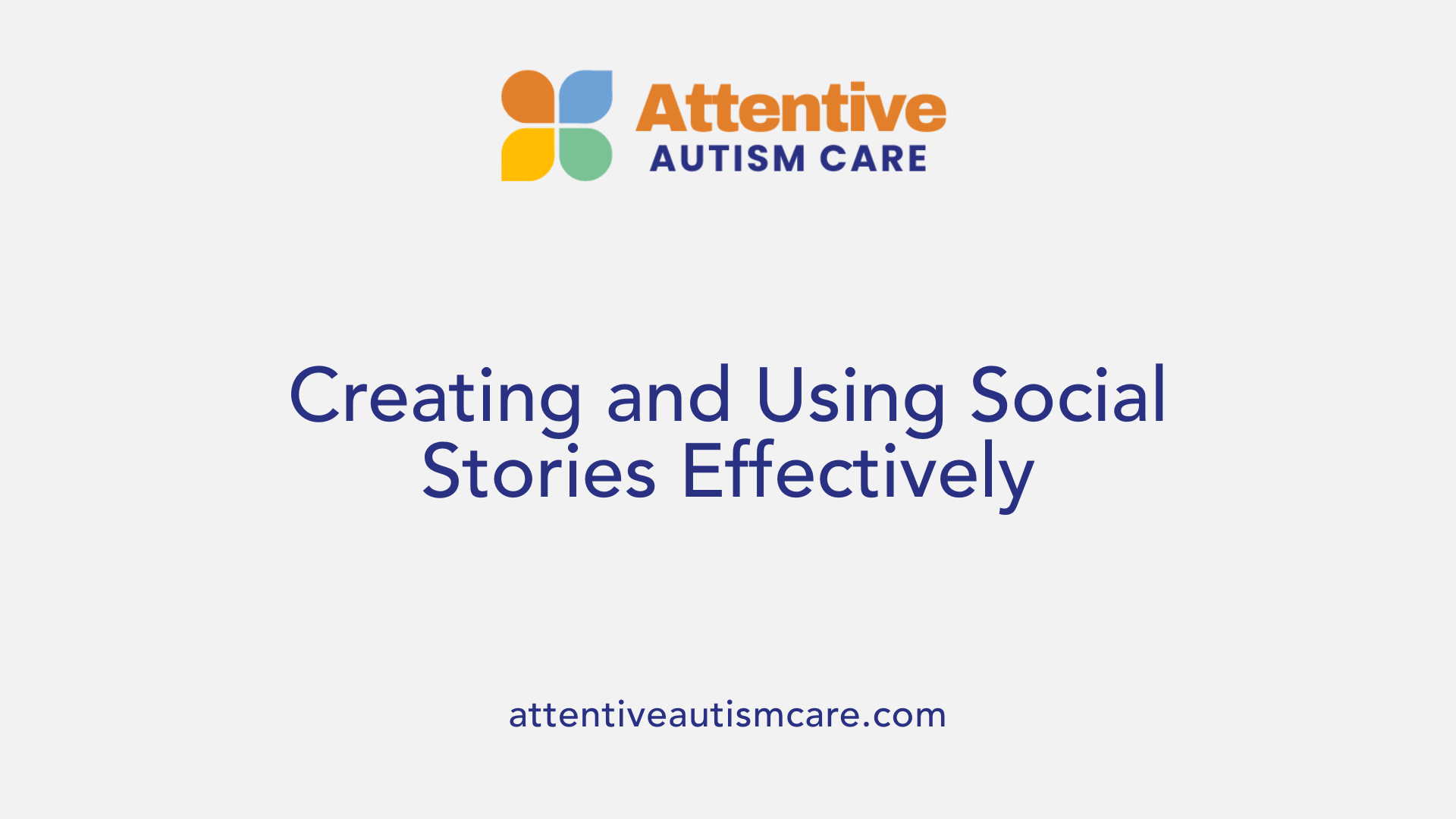
What are the steps for creating social stories?
To develop an effective social story, start by clearly defining the social situation or behavior you want to address. Gather information about the specific context from the child's perspective and pinpoint the behavior or understanding to be improved. Write the story using simple, positive language, and include descriptive details that make the scenario understandable.
Follow a structured format that includes a clear title, an introduction, the main body, and a conclusion. The sentences should incorporate various types, like descriptive, directive, and affirmative, with at least 50% positive content. Visual supports, such as pictures or drawings, should be included whenever possible to aid comprehension.
Once the story is drafted, personalize it by adding the child's name, interests, and familiar environments. It is recommended to create the story a bit before the social situation occurs so the child can familiarize themselves with it through repeated reading.
How can caregivers, educators, and professionals create and implement social stories?
Effective creation involves collaboration among caregivers, educators, and professionals such as speech therapists or psychologists. They should first identify the targeted social skill or challenge, then craft stories that are respectful, accurate, and easy to understand.
Implementation involves reading the story with the child multiple times, ideally in a relaxed setting. The story should be shared just before the social situation occurs to provide context and reduce anxiety. Using multimedia tools like digital apps or videos can make stories more engaging. Role-playing the scenarios presented in the stories also helps reinforce learning.
Tailoring stories to reflect the child's environment enhances relevance and engagement. Repetition and positive reinforcement are critical to help children internalize appropriate social behaviors.
What resources and templates are available online?
A range of digital resources, templates, and guides are accessible online to aid in creating social stories. Websites like Carol Gray’s official platform offer templates and comprehensive instructions aligned with her criteria. Various organizations and autism support groups provide free or low-cost printable templates that can be customized.
Tools such as the SOFA-app, which has received accolades for evidence-based practice, assist in crafting personalized stories and are supported by research indicating their effectiveness. Additionally, many websites offer visual aids, example stories, and step-by-step guides to help parents and educators design stories suited to individual needs.
What are the best guidelines for effective implementation?
Effective implementation requires consistency, positive presentation, and personalization. Read the story multiple times to the child, and incorporate it into routine activities to reinforce its message.
Introduce the social story a few days or weeks prior to the social situation, allowing time for familiarity. When possible, include visual supports and involve the child in the story-making process to boost engagement.
Use stories as part of a broader social skills program, including role-playing and social practice, to maximize benefits. Always monitor the child's reaction and adjust the story content or presentation style as needed.
In sum, creating and applying social stories is a nuanced process that benefits from collaboration, resourcefulness, and consistency, helping children with autism develop safer, more appropriate social behaviors.
The Significance of Social Stories in Autism Support
Overall, social stories are a valuable, evidence-informed tool that can significantly enhance social understanding and skills in individuals with autism. Their personalized nature, combined with structured, visual, and positive content, makes them adaptable across multiple settings—from schools to homes—supporting learning at each stage. While current research underscores their potential, ongoing studies aim to strengthen the scientific evidence for their efficacy. Parents, educators, and professionals are encouraged to utilize available resources and guidelines to craft tailored stories that meet the unique needs of each learner. When integrated into a comprehensive support plan, social stories can promote greater independence, social inclusion, and quality of life for individuals on the spectrum.
References
- Social Stories for Autistic Children – The Ultimate Guide
- Social Stories - ABA Educational Resources
- Social Stories For School | Free Library - Autism Little Learners
- “A scoping review: Social stories supporting behavior change for ...
- Social stories and autism | Raising Children Network
- Social Stories (TM) - KSDE TASN
- What Are Social Stories for Kids With Autism?








































